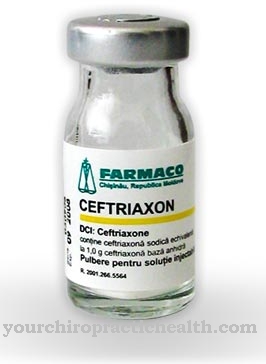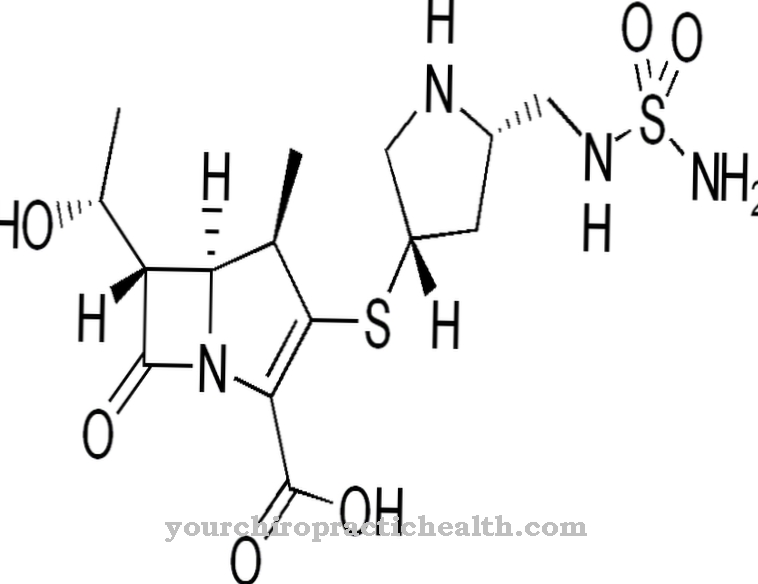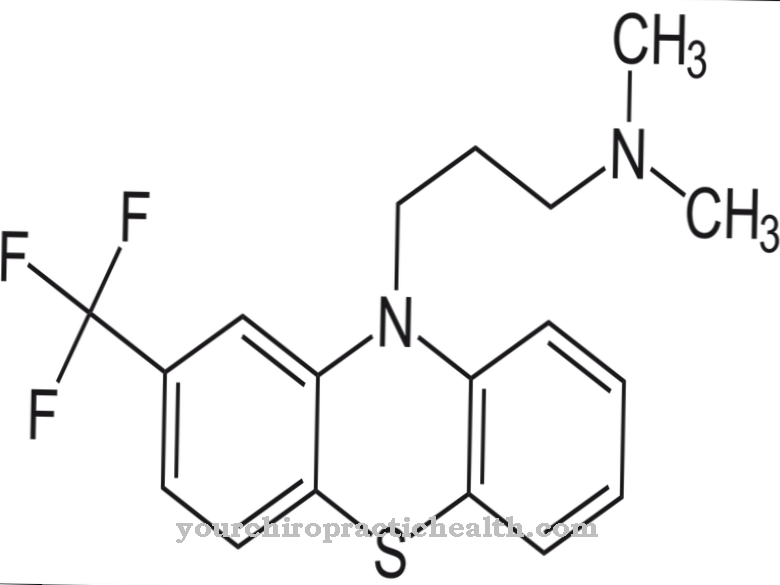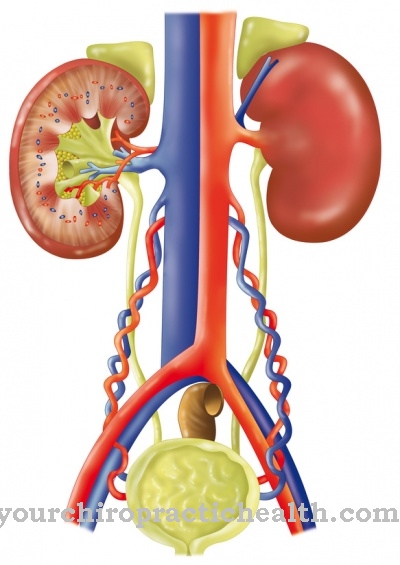Enoxacin is a medicinal substance that is widely used as a synthetic antibiotic. It is used in medicines to treat infections caused by bacteria that are sensitive to enoxacin. These include u. a. acute and moderate urinary tract infections, gonorrhea, and skin and respiratory tract infections.
What is enoxacin?
Enoxacin is a synthetically produced antibiotic. Due to its chemical and pharmacological properties as well as its mode of action, the substance is assigned to the group of fluoroquinolones. The active substances norfloxacin and ofloxacin are also part of this group.
Enoxacin is one of the more modern representatives of this group. Accordingly, the medicinal substance is particularly effective, which is reflected in a wide range of applications. In particular, enoxacin can be used to treat gram-negative bacteria, which is not the case with all fluoroquinolones. All infectious bacteria that turn red when a differential staining procedure is carried out are gram-negative. This coloring distinguishes them from gram-positive pathogens that turn blue in the course of the differential coloring.
The effects of enoxacin are bactericidal. The antibiotic specifically kills bacteria by inhibiting their enzyme gyrase. Enoxacin is therefore also categorized as a gyrase inhibitor. The white to yellowish-white substance is described in chemistry by the empirical formula C 15 - H 17 - F - N 4 - O 3 and has a moral mass of 320.32 g / mol. It is usually taken orally.
Pharmacological effect
Enoxacin has a bactericidal effect. The drug specifically kills infectious bacteria. This is made possible by inhibiting the bacteria’s own enzyme gyrase. The enzyme is of immense importance for the cell because it a. controls what is known as DNA supercoilling (spatial arrangement of DNA through the formation of ring-shaped molecules). Once gyrase has been inhibited, the infectious bacteria are no longer able to multiply. They die.
Although enoxacin is generally considered to be quite effective and has a broad spectrum of activity, it cannot be used against all bacteria. The effectiveness is particularly low compared to bacteria in the cocci supercategory, to which the known pathogens streptococci, pneumococci and staphylococci belong.
In addition, enoxacin has lost importance in recent years, as new representatives of the same class of active ingredients (e.g. levofloxacin or ciprofloxacin) develop a more intensive pharmacological effect. Compared to enoxacin, these have a lower potential for interaction and a stronger bactericidal effect.
Enoxacin is taken orally and sold in the form of film-coated tablets. Preparations that contain the active ingredient are only available on prescription and pharmacy, i.e. only available on prescription.
Medical application & use
Enoxacin is used for infections caused by bacteria that are sensitive to enoxacin. These include some gram-negative bacteria. A medical indication for enoxacin is a. if you have infections of the urinary tract, kidneys or prostate. In addition, enoxacin is prescribed for gonorrhea (colloquially called “gonorrhea”). But the active ingredient is also administered in the case of bacterial infections of the upper and lower respiratory tract, including the ear, nose and throat area.
Due to the poor effectiveness, there is no indication for infections caused by pneumococci, streptococci or staphylococci. Since most pneumonia acquired outside of the hospital is caused by pneumococci, they typically don't have a prescription for enoxacin.
However, enoxacin is used without restriction in the case of skin infections or skin appendages. The dosage of preparations containing enoxacin varies depending on the disease to be controlled. Usually, however, two to four tablets are taken daily and are prescribed for a period of seven to 14 days. To protect the stomach, it should be taken with or shortly after a meal.
You can find your medication here
➔ Medicines for colds and nasal congestionRisks & side effects
Enoxacin must not be administered if there is hypersensitivity to the active substance. Even if you have allergies to other representatives of the fluoroquinolones group (e.g. norfloxacin, levofloxacin, ciprofloxacin or ofloxacin), the drug must not be taken for safety reasons.
There is also a contraindication (medical contraindication) for children and adolescents in the growth phase. For this group, there are no sufficiently reliable findings with regard to application security. There is also a contraindication for epileptics and patients with a creatinine clearance of less than 30 ml / min.
Unwanted side effects can occur during treatment with enoxacin. Their statistical distribution looks like this:
- Very common (affects more than 1 in 10 people) loss of appetite and diarrhea, an increase in liver enzymes and skin reactions (e.g. slight rashes) occur.
- Often (affects more than 1 in 100 people) stomach upset, vomiting and nausea occur. However, an increase in the creatinine level in the serum and anaphylactic reactions are also possible after administration of enoxacin.
- Occasionally (affecting more than 1 in 1,000 people) anemia may develop. Visual and taste disorders as well as abdominal pain are also conceivable.
- Serious skin reactions (e.g. Stevens-Johnson syndrome or Lyell syndrome) occur rarely (affects more than 1 in 10,000 but less than 1 in 1,000 people). Restlessness and photophobia are also rare.
- Very rare (affects less than 1 in 10,000 people) are drowsiness, seizures and hyperglycaemia.



























